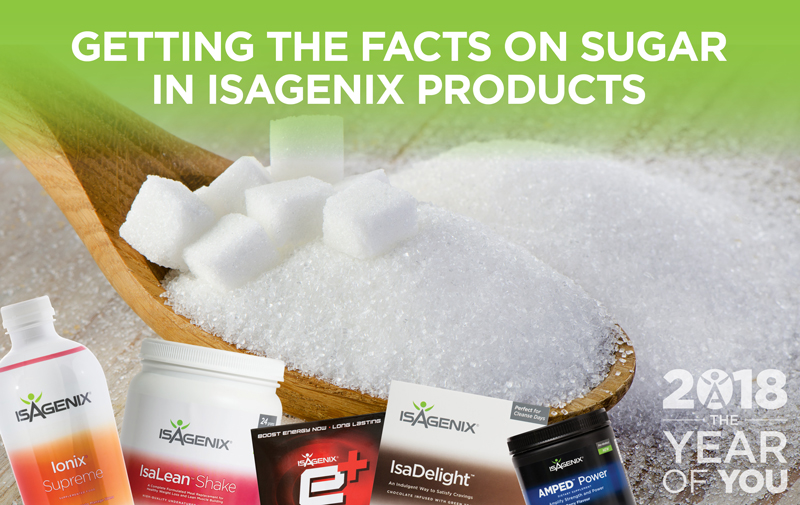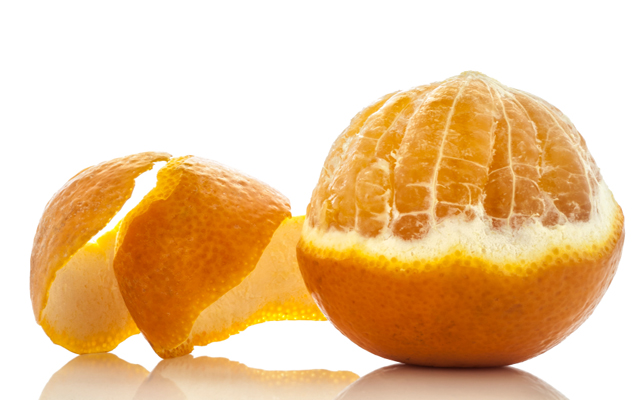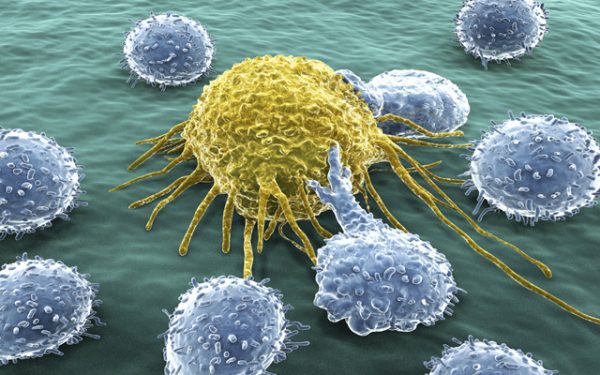The use of modest amounts of sugar for natural sweetness in Isagenix products often raises questions from health-conscious consumers.
Agreeably, most of us consume too much sugar, with estimates of the average consumption in Australia nearing 60 grams of sugar per person per day, and with one in two Australians consuming more than the WHO guidelines for sugar intakes (1). The truth is that any carbohydrate, including sugar or fructose, that is consumed in amounts exceeding a person’s calorie requirements can contribute to weight gain and related health issues.
But the evidence doesn’t suggest that sugar or fructose is harmful as a source of carbohydrate, as long as it’s consumed in balanced amounts as part of a calorie-controlled diet.
Most People Cut Sugar and Carbs With Isagenix
People following appropriate system guidance from Isagenix are likely to drastically reduce total intake of carbs and sugars.
The evidence of this reduction in total carbohydrate is found in scientific studies evaluating Isagenix products. In a recent study conducted at Skidmore College, for example, subjects cut total intake of carbohydrates by about half and sugar by almost two thirds on average (2).
These reductions took place despite the use of moderate amounts of carbohydrate and sugar in Isagenix products including in meal replacements like IsaLean™ Shake. The calorie reduction helped to support weight loss including visceral fat loss among the study participants (2).
Why Fructose Is Preferred in Meal Replacements
In a meal-replacement product such as IsaLean Shake, the total amount of sugar is around 11 grams, with about half of that present as fructose, depending on the flavour. The amount is equivalent to that of a medium-sized orange which also has around half of its natural sugar content as fructose.
When used in calorie-controlled meal replacements, fructose is a preferred ingredient because it’s relatively sweeter than other types of sugar or carbohydrate sources, which allows for the use of less sugar overall.
Moreover, when fructose is present in moderate amounts as part of a meal, it can deliver measurable benefits. Compared to other sugars, consuming fructose results in a more moderate rise in blood glucose levels. Well-designed controlled studies have shown that fructose present in moderate amounts in meals as compared to other sources of carbohydrates can support better maintenance of blood sugar levels (3).
The most recent evidence comes from Australian and New Zealand researchers who performed a meta-analysis of randomised controlled trials to evaluate the effect of fructose when used in place of other carbohydrate sources like glucose or sucrose (4). The scientists found that fructose has a much lower effect on blood glucose and insulin response.
Clearing Up Fructose Controversies
Some controversy has existed surrounding fructose because of its unique metabolism in the liver. This is due to concerns that, as shown in animal studies, excess fructose consumption could lead to the accumulation of body fat that would include visceral fat (5).
However, human clinical data has not supported the hypothesis that fructose presents any unique harm, with most evidence suggesting that fructose intake in normal amounts is mainly converted to glucose or glycogen and burned off as energy (5).
When fructose is used purposefully in the context of a calorie-controlled eating plan, consumption should not be a concern. As a reminder, in a recent study that evaluated weight loss on an Isagenix program that included IsaLean Shake, subjects saw significant reductions in total, abdominal, and visceral fat levels (2).
Why Not Just Use Stevia?
A common and reasonable question from consumers is why stevia is not used solely for sweetening meal replacements.
The natural leaf extract is already used for providing some sweetness to the IsaLean Shake and other Isagenix products. Stevia is not a source of carbohydrates or sugar and provides zero calories. It’s also subject to recent studies showing it can also be helpful for managing blood sugar (6).
The answer is that some carbohydrate is a good thing in any nutritious food or meal replacement. It’s not only important for appeal coming from its sweetness, but it can help contribute to the balance of carbohydrate for energy and fuel for physical activity (7). Carbohydrates also play a role in post-meal satiety via receptors in the small intestine (8).
References
- Australian Health Survey: Consumption of Added Sugars. Australian Bureau of Statistics. Available at: http://www.abs.gov.au/ausstats/abs@.nsf/Lookup/4364.0.55.011main+features12011-12
- Arciero PJ, Edmonds R, He F, Ward E, Gumpricht E, Mohr A, Ormsbee MJ, Astrup A. Protein-pacing caloric-restriction enhances body composition similarly in obese men and women during weight Loss and sustains efficacy during long-term weight maintenance. Nutrients 2016, 8(8), 476; doi: 3390/nu8080476.
- Cozma AI et al. Effect of fructose on glycemic control in diabetes: A systematic review and meta-analysis of controlled feeding trials. Diabetes Care 2012;35:1-10.
- Evans RA, Frese M, Romero J, Cunningham JH, Mills KE. Fructose replacement of glucose or sucrose in food or beverages lowers postprandial glucose and insulin without raising triglycerides: a systematic review and meta-analysis. Am J Clin Nutr 2017 Aug;106(2):506-518. Available at: http://ajcn.nutrition.org/content/106/2/506.
- Tappy L, KA L. Metabolic effects of fructose and the worldwide increase in obesity. Physiol Rev. 2010 Jan;90(1):23-46.
- Goyal SK, Samsher, Goyal RK. Stevia (Stevia rebaudiana) a bio-sweetener: a review. International Journal of Food Sciences and Nutrition 2009;61(1):1-10. doi:10.3109/09637480903193049.
- Burke LM, Loucks AB & Broad N. Energy and carbohydrate for training and recovery. J Sports Sci. 2006 Jul; 24(7):675-85.
- Feinle C, O’Donovan D, Horowitz M. Carbohydrate and Satiety. Nutrition Reviews 2002 Jun. Vol 60 (6): 155–169





